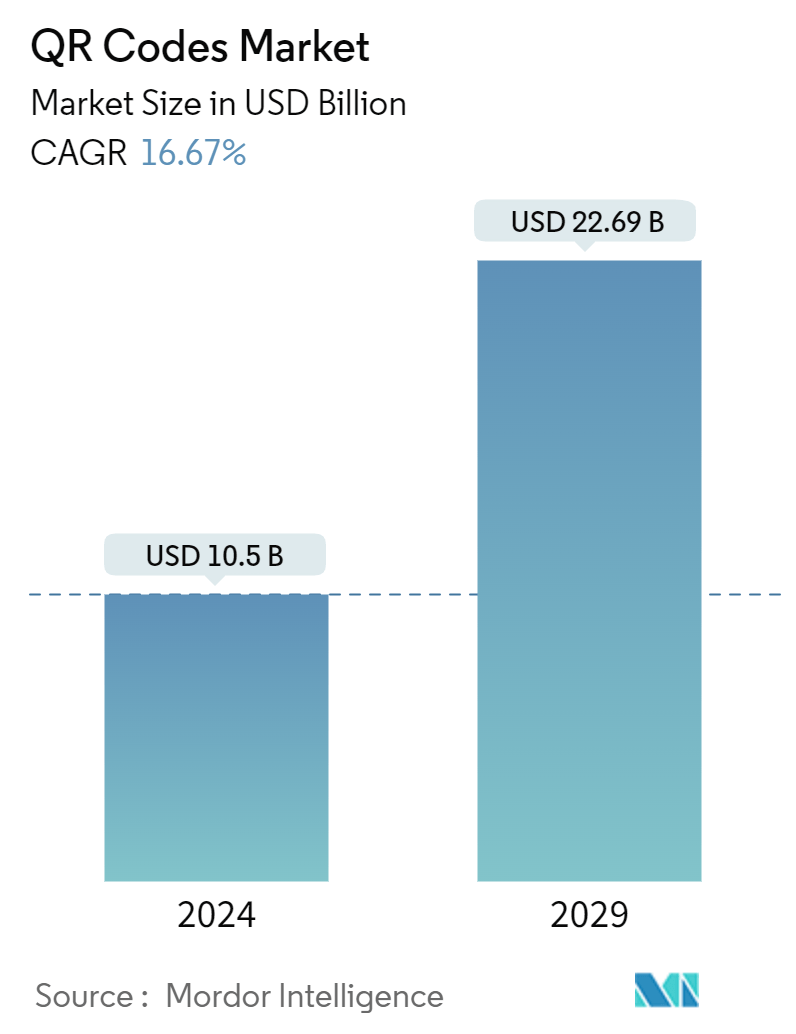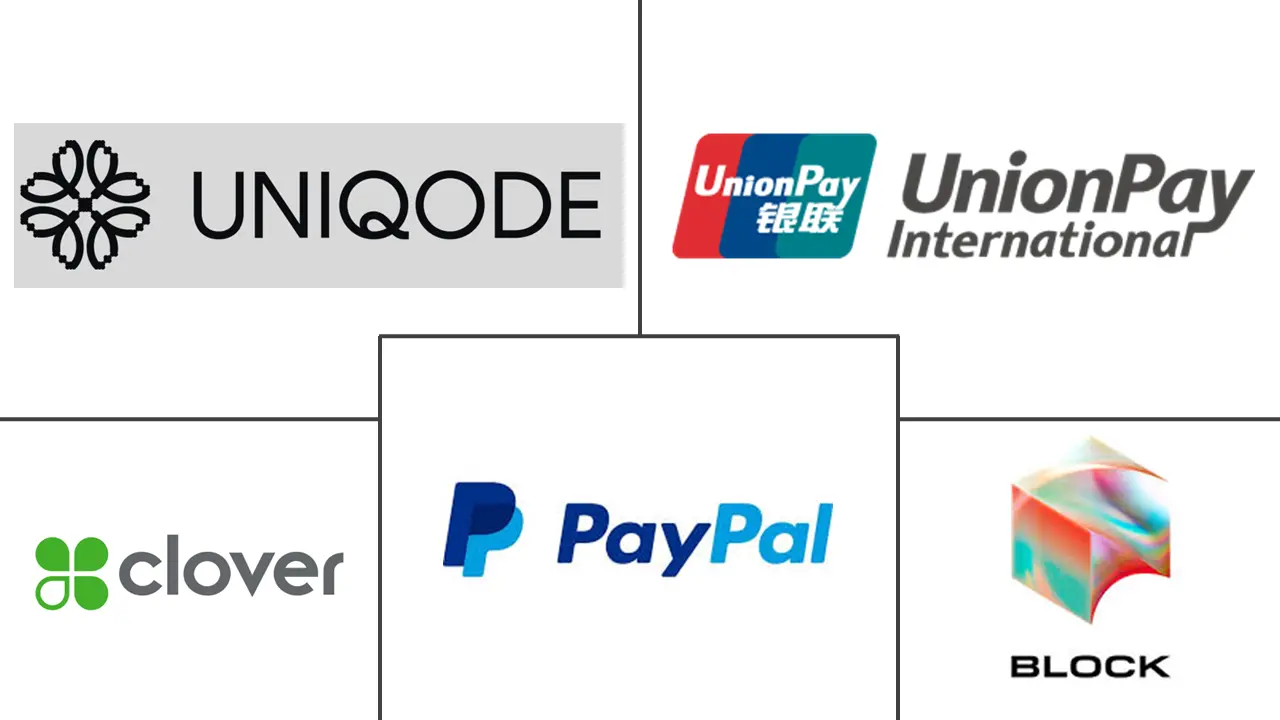Market Size of QR Codes Industry

| Study Period | 2019 - 2029 |
| Market Size (2024) | USD 10.5 Billion |
| Market Size (2029) | USD 22.69 Billion |
| CAGR (2024 - 2029) | 16.67 % |
| Fastest Growing Market | Asia Pacific |
| Largest Market | North America |
Major Players
*Disclaimer: Major Players sorted in no particular order |
QR Codes Market Analysis
The QR Codes Market size is estimated at USD 10.5 billion in 2024, and is expected to reach USD 22.69 billion by 2029, growing at a CAGR of 16.67% during the forecast period (2024-2029).
- • A Quick Response code (QR code) is a 2D barcode that can be scanned by digital devices like smartphones to access information quickly. Unlike traditional barcodes, which are one-dimensional and can be read in one direction only, QR codes can be scanned in two dimensions, both top to bottom and right to left, allowing them to store significantly more information.
- • QR codes serve diverse purposes, ranging from sharing basic business card information to facilitating sophisticated functions like touchless payments, WiFilogins, event check-ins, and online ordering. This adaptability caters to a multitude of business requirements.
- • The proliferation of smartphones globally is anticipated to be a primary driver for the growth of the QR code market. The accessibility of high-quality cameras and internet connectivity on mobile devices has made scanning QR codes effortless for consumers. As more people acquire smartphones, the user base for QR codes expands, leading to increased adoption across various sectors, including hospitality, retail, and healthcare.
- • For instance, according to Ofcom, the smartphone penetration rate in the United Kingdom increased each year since 2016, reaching an overall figure of 94% in 2023. Those aged between 24 and 34 and 35 and 54 years recorded the highest smartphone penetration rate. Despite increasing saturation in developed regions, there is still room for growth in many large, underpenetrated markets in developing regions. For instance, according to GSMA, India and Sub-Saharan Africa will account for nearly half of new mobile subscribers globally over the 2022–2030 period.
- • According to Ericsson, the number of smartphone mobile network subscriptions worldwide reached around 7 billion in 2023 and is estimated to exceed 7.7 billion by 2028. The United States, India, and China are among the countries with the highest number of smartphone mobile network subscriptions.
- • E-commerce platforms and mobile shopping apps are swiftly adopting QR code payments. During online purchases, customers now have the option to select QR code payments at checkout. After confirming their purchase, users can seamlessly and securely complete the transaction by scanning the generated QR code using either a mobile banking app or a dedicated QR code payment app. This technology streamlines the payment process and enhances the overall convenience of online shopping. Furthermore, numerous companies have integrated QR code payments with loyalty programs to boost consumer engagement and retention.
- • QR codes significantly enhance marketing campaigns by simplifying decision-making for consumers. They provide seamless access to sign-up pages, websites, and landing pages, thereby boosting engagement with targeted audiences across multiple platforms. Furthermore, businesses can track who scans their materials, how frequently, the devices used, and the timing of each scan through QR codes. Such tracking offers businesses crucial insights into customer engagement, repeat clientele, and general feedback.
- • However, QR code-based government payments, often tied to legislation, vary significantly across jurisdictions. These regulatory challenges encompass taxation and other complexities. In certain cases, stringent regulations hinder companies and start-ups from providing QR code payment services. The intricate regulatory landscape can deter potential market entrants due to the time investment required. Moreover, the regular collection and processing of financial and personal data during QR code transactions amplifies users' privacy concerns.
- • Furthermore, in low and middle-income countries, the general public lacks access to sophisticated smartphones, rendering QR codes unusable. This is because smartphones capable of scanning QR codes come at a premium, outpacing the cost of basic mobile phones. Several factors, such as limited comprehension of the technology, the inconvenience of scanning, and security concerns regarding payments and QR code scanning, may hinder the widespread adoption of QR codes.

